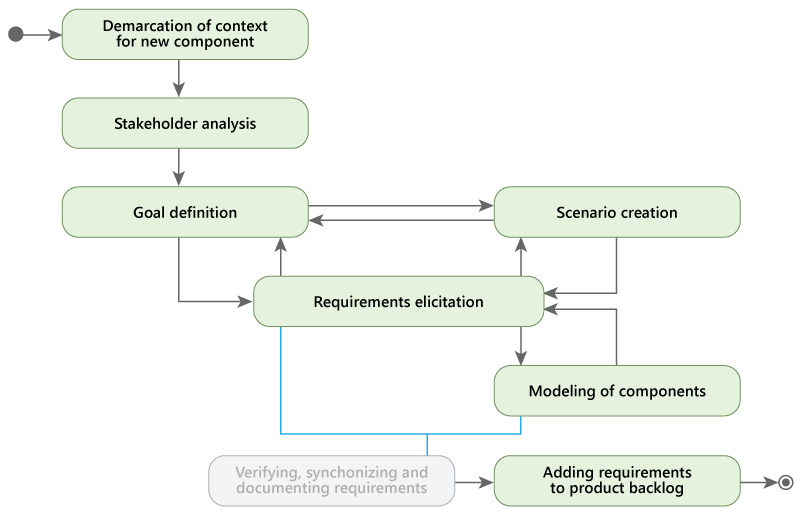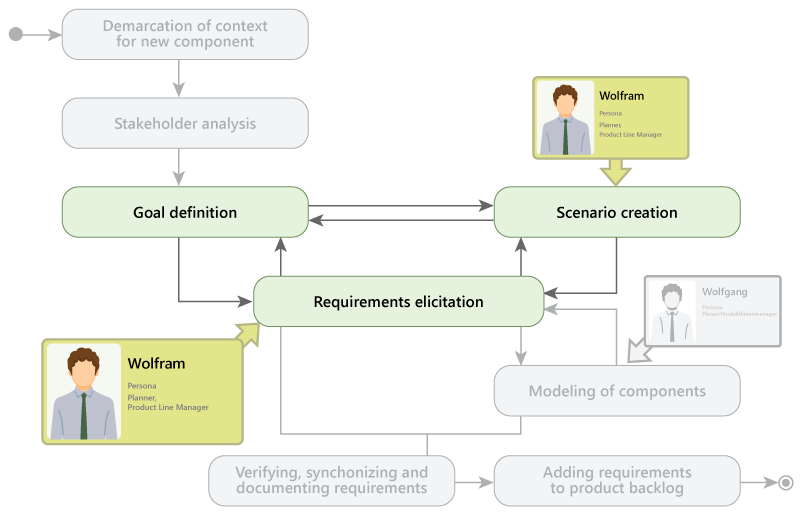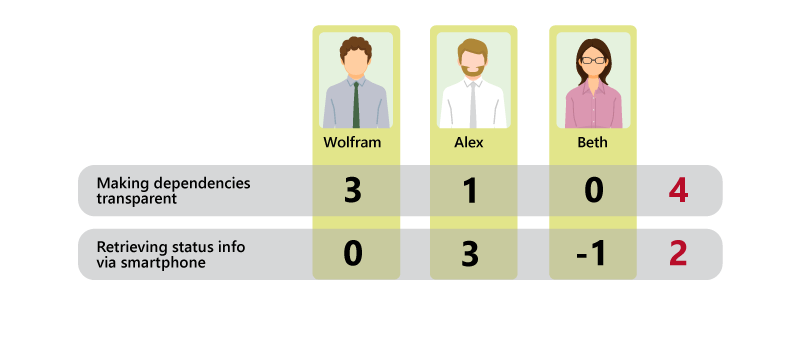Personas. Understand Potential Users through Prototypes.
What are personas, how are they developed and what benefits does the persona concept offer?
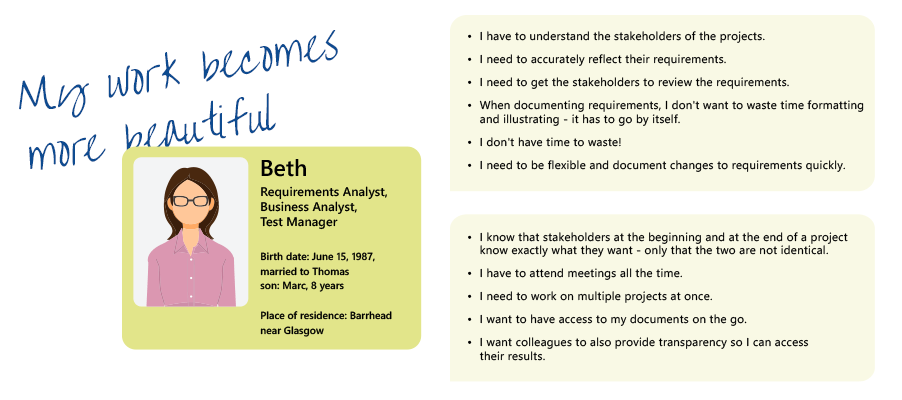
Personas are conceived users of a solution, software, service or product.
They have hobbies, values, motives, attitudes. And thus also expectations towards the usage of a product.
As fictitious users they show usage patterns. And these patterns companies should/must consider when developing products or solutions.
Is it important for you, if your users try to eat healthy and care for environmentally friendly driving? It may effect you, e.g. how do you convince environmentally conscious users of your product, if you decided to produce it in regions with lower environmental and social standards?
What Are Personas?
It is difficult to anticipate the needs and requirements of users. In most cases it is impossible sit down beside them and watch them use products, to get to know them and to ask them about their personal and professional life, their goals and their experiences. The persona concept can help here. The method was invented by Alan Cooper, who first described it in 1995.
A persona represents a group of users. It has goals and motives, values and expectations, a need and shows user behavior. Through these concrete properties, personas help businesses to develop user-friendly products and solutions, even if the actual users remain unknown. In addition, personas help to make a user’s knowledge as well as assumptions about him or her visible. This makes communicating about users much easier. Subsequently, all project contributors are able to put themselves into their users’ shoes.
A persona is a prototype that represents a group of users. Personas have concrete characteristics and a specific way of using and interacting with products. Thus, they can also be described as ficticious users. They are based on data on future users of a system and give actors a face, a personal background, a family, an office, colleagues, preferences and much more.
In most cases multiple personas are developed at a time. The goal is to cover all potential users of an application, a product or a system as extensively as possible. In all cases, a persona has a name and a face (in form of a picture). Depending on the desired or required depth of detail more characteristics may be added, e.g. job description, marital status, goals, needs, wishes, education, knowledge, attitude toward the product, hobbies, expectations and so on.
A persona is a prototype that represents a group of users to whom a business doesn’t have simple and direct access. The concrete properties and user behavior of personas helps businesses to develop solutions.
Apply Your Knowledge of Personas in Practice

The Areas of Application of Personas
Personas are ideal to discuss solutions and to make decisions about alternative designs. When working with them, it will become quickly obvious that there is not one user. A user can be contradictory, sometimes cautious, sometimes daring, contemplative and quick to make decisions. So, a persona is a person – by thinking about this, they refine even finding solutions for the implementation of a feature. Whilst making your development more lively and efficient. Additionally, working with abstract users makes work fun – because it requires empathy with actual users. And this empathy distinguishes personas from goal groups.
Personas can be used actively in many areas, be it:
- Software or product development
- Requirements engineering and management
- Project management
- Service and support
- Sales
- Marketing
- Advertising
- Business planning.
Meanwhile, buyer personas, searcher personas, etc are also spoken of. These personas are used in selected areas and special phases, for example, in the sales process or when optimizing online marketing measures. There you can recognize how adaptable and useful the persona concept is for many organizations.
The persona concept can also be used in many project phases:
- Project preparation or its beginning
The earlier project participants have concrete ideas of potential users and their motivations, the better the expectations and goals can be used, for example, in defining requirements. - During the project
In each project, there are changes and adaptations. Here, personas can help with the comparison of the current and expected states, and avoid a scope creep (or a focus creep, requirements creep, feature creep). This means that the persona concept also helps to keep an eye on the goals of projects and developments. - During the operation
Even in the operation of a website, application or an app, personas help. Is the solution so simple that the persona “Bridget,” who doesn’t read instruction manuals, can just make the right steps in the right order? Or persona “Max,” who is impatient. How will he react when he has to communicate with a website, email and then also with fax, before he can place his order? Personas can also help to optimize solutions and services.
Development and Regular Use of Personas
Personas do not appear from nowhere. The best way to create your own, individual personas and to improve your products and services sustainably is in a personas workshop. Such a workshop comprises four steps:
- Find ad hoc personas
- Gather and solidify information
- Develop and solidify framework for personas
- Detail and document personas
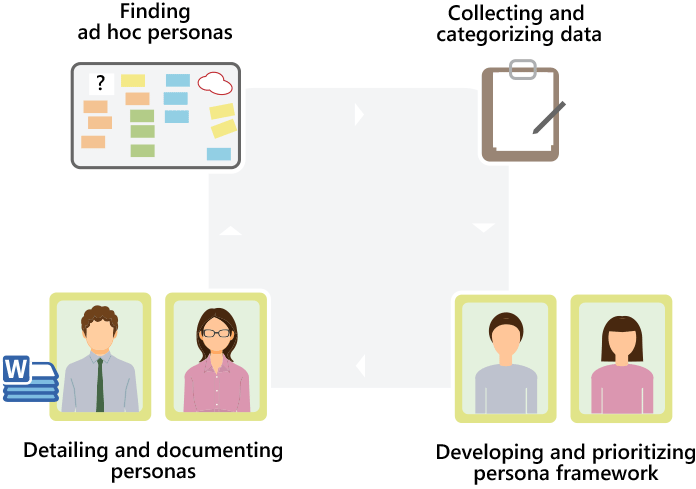
Of course you could just describe personas in your intranet. The question is whether anybody will actually take note and use them in their daily work. A better way is to visualize them, for example by creating posters for your meeting rooms or flyers for workspaces. These help to bring attention to them and to facilitate an understanding for them. Should you at some point hear at a meeting utterances like That’s way too complicated for Chris or I think Beth would disagree, you can be sure that your personas have been accepted!
Including personas in your day-to-day work is highly recommended:
- Personas are a tried-and-tested method to improve communication and creative output in teams
- Personas and persona scenarios help to find and prioritize solution-oriented requirements
- Personas help to focus on the users and to create user-friendly systems
How Are Personas Put into Practice?
After you have identified your personas the next step is to make full use of them to apply them in the most effective way. To illustrate this question, take a look at the following requirements engineering process. It includes various steps such as context demarcation, stakeholder analysis and scheduling of requirements. So at which point should you put your personas to use?
In this situation, personas will help to detail the scenarios your users are in. Without personas you will probably find a few goals, decribe some scenarios and even derive a few more goals from them. Personas, on the other hand, offer the possibility to create concrete scenarios and discover all relevant goals. At the same time, requirements elicitation and even the modeling of components is much easier and more effective with the use of personas. In short, personas help to get a complete picture of your system and the functionalities it must possess.
The next step
You have gathered a lot of information about goals, motivation, fields of knowledge and behaviour of your users. You have put a lot of effort into giving your users a face, a personal background and much more. The best thing to do now is to use an appropriate tool with which you can work together as a team. A tool that gives all project contributors the opportunity to benefit from the development of your personas, for example as a concretion of actors in use case scenarios.

